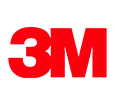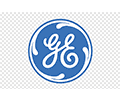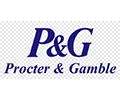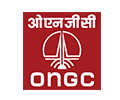
Understand The Key Trends Shaping This Market
Download Free SampleGCC Alcoholic Drinks Market Overview: Market Size & Forecast (2026–2032)
What is the anticipated CAGR & size of the GCC Alcoholic Drinks Market?
The GCC Alcoholic Drinks Market is anticipated to register a CAGR of around 7.6% during the forecast period (2026–2032). Also, the market size was valued at nearly USD 9.11 billion in 2025 and is projected to reach USD 15.21 billion by 2032.
Market Analysis & Insights
The industry is driven by increasing tourism, shifting customer preferences, and surging hospitality investments. The market comprises a varied range of alcoholic beverages like beer, spirits, wines, cider, and pre-mixed drinks. Also, luxury hotels, resorts, and international events across the UAE, Qatar, and Bahrain play a fundamental role in solidifying sales, with key companies such as Anheuser-Busch InBev, Heineken NV, Diageo, and Pernod Ricard actively growing across the Middle Eastern region.
Additionally, the GCC Alcoholic Drinks Market growth is instigated by the region’s increasing expatriate population & premiumization trends, where customers gradually prefer craft beer, fine wines, and spirits. Along with this, technological deployment & AI adoption across the Alcoholic Drinks Industry are redesigning the value chain. Also, AI is being favored by companies for predictive analytics, individual sentiment tracking, and personalized marketing strategies. For example, Anheuser-Busch InBev employs AI-driven demand forecasting models to optimize inventory in GCC retail outlets, while Diageo PLC is assimilating AI-powered recommendation engines to improve consumer experiences in both on-trade & off-trade distribution channels.
Furthermore, AI-enabled supply chain optimization has minimized wastage & enhanced real-time monitoring for premium spirits in the GCC Alcoholic Drinks Market. Also, prospects remain robust as AI-backed modernizations in e-commerce platforms, digital marketing, and smart logistics would improve product accessibility & consumer engagement. Moreover, combined with growing hospitality infrastructure, upcoming global sports events, and government-regulated import frameworks, the GCC Alcoholic Drinks Market is envisioned to sustain thrust, with technology-driven distribution channels becoming a game-changer during the forthcoming period.
GCC Alcoholic Drinks Market Dynamics
What driving factor acts as a positive influencer for the GCC Alcoholic Drinks Market?
- Tourism & Hospitality Growth to Drive Market Demand: A major driver for the GCC Alcoholic Drinks Market is the noteworthy tourism expansion, specifically in the UAE & Qatar, which are global hubs for trade & leisure. The UAE alone received over 17.2 million international visitors in 2023 (Dubai Department of Economy & Tourism), increasing market demand in premium hotels & resorts where alcoholic beverages are a chief revenue stream. Also, rising disposable incomes & the flourishing trend of luxury dining experiences are further driving sales of beer, spirits, and wines in the GCC’s hospitality industry.
What are the challenges that affect the GCC Alcoholic Drinks Market?
- Strict Regulatory Frameworks to Impede the Industry Growth: Stringent government regulations governing the sale, promotion, and consumption of alcoholic beverages present challenges to the market despite its promising pace. Also, several countries, such as Kuwait & Oman, limit sales to authorized locations only, while others, such as Saudi Arabia, impose prohibitions. Moreover, cultural sensitivities, high import taxes, and compliance needs put international alcoholic beverage companies seeking to expand their market share at a disadvantage. Further, these constraints frequently lead to elevated prices, which makes products less affordable for younger consumer groups, further hampering the market growth.

How are the future opportunities transforming the market during 2026-32?
- Premiumization & Craft Segment Growth: Premiumization provides a key opportunity for the GCC Alcoholic Drinks Market, with customers inclining toward craft beer, luxury wines, and artisanal spirits. For example, the cider & perry category is undergoing renewed interest, instigated by expatriate demand & emerging tastes. Moreover, the surge of on-trade experiences like mixology bars in Dubai & Doha reflects the increasing appetite for improvement. Also, according to market research reports, the premium & craft segment across GCC is anticipated to expand at approximately 2x the pace of traditional alcoholic beverages by 2032, opening prospects for niche entrants & local associations.
What market trends are affecting the GCC Alcoholic Drinks Market Outlook?
- AI-Enabled Distribution & Smart Marketing: The deployment of AI in marketing & sales channels is one of the most noticeable trends across the GCC Alcoholic Drinks Market. Enterprises such as Diageo & Heineken are experimenting with AI-driven chatbots for personalized product recommendations, and Carlsberg has directed AI-based flavor development to launch region-specific products. In addition, AI is being utilized in e-commerce for custom-made promotions & in GCC supermarkets for demand prediction, demonstrating how AI role-play is transforming the entire alcoholic beverage ecosystem. Also, this trend is presumed to pick up speed during the forecast period, enhancing market efficiency & consumer satisfaction.
How is the GCC Alcoholic Drinks Market Defined as per Segments?
The GCC Alcoholic Drinks Market Research Reports provide detailed market data & insights in accordance with market segmentation. Some of the segments are:
- Product Type: Beer, Spirits, Cider, Wines, Pre-Mixed Drinks
- Distribution Channels: On-Trade, Off-Trade
By Product Type:
The Beer segment remains the foremost segment, accounting for the biggest share across the GCC Alcoholic Drinks Industry. Also, increasing consumption among expatriates, broader acceptance in hospitality venues, and affordability compared to spirits & wines elevate market demand. Further, according to the Alcoholic Drinks Market, beer sales in the GCC are predicted to expand progressively, with the requirement for low-alcohol & flavored variants expanding in the future years.
By Distribution Channels:
The On-Trade Distribution Channel captures a prominent share of the GCC Alcoholic Drinks Market, compelled by robust sales in restaurants, bars, nightclubs, and hotels. Also, the UAE leads this growth, with Dubai & Abu Dhabi aiding as international hospitality hubs. Moreover, as per the recent statistics, about 65% of alcoholic beverages across the GCC are sold via on-trade venues, emphasizing the sector’s dependence on tourism & business travelers.
GCC Alcoholic Drinks Industry: Country Insights
The GCC Alcoholic Drinks Market is geographically diversified, covering:
- The UAE
- Qatar
- Oman
- Bahrain
The UAE Alcoholic Drinks Market holds the biggest share across the GCC market, driven by its status as a global tourism hub & liberalized policies in comparison to neighboring states. Also, Dubai & Abu Dhabi account for a substantial market share of alcohol sales, with estimates that over 60% of GCC alcoholic beverages sales occur in the UAE. Further, constant government initiatives to encourage tourism, together with world-class hospitality infrastructure, make the UAE the foremost regional market during the forecast period.
GCC Alcoholic Drinks Market: Recent Developments (2025)
- Heineken NV introduced a new premium low-alcohol beer variant across the UAE, made for health-conscious customers & expanding its product portfolio in the GCC.
- Anheuser-Busch InBev NV entered into a strategic AI-driven supply chain partnership with a Dubai-based retail tech company to improve real-time inventory & demand forecasting in the GCC markets.
What are the Key Highlights of the GCC Alcoholic Drinks Market (2026–32)?
- Through 2032, the GCC Alcoholic Drinks Market is predicted to develop steadily at a CAGR of roughly 7.6%.
- The best-selling segments across on-trade channels continue to be wines, spirits, and beer.
- Leading market companies such as Anheuser-Busch InBev, Diageo, and Heineken are investing in premiumization, AI amalgamation, and partnerships.
- The UAE Alcoholic Drink Market is motivating regional dominance, supported by tourism & hospitality.
- AI is transforming the marketing & supply chains of alcoholic beverages, enhancing personalization & efficacy.
How does the Future Outlook of the GCC Alcoholic Drinks Market (2032) Appears?
Premiumization, travel, and AI-enabled distribution channels are presumed to impel the GCC Alcoholic Drink Market's noteworthy growth via 2032. In addition, by the end of the projected years, the sector is foreseen to reach nearly USD 15.21 billion, with AI being a key component of digital marketing, personalized product creation, and predictive analytics. Moreover, the GCC Alcoholic Drinks Industry is envisioned to surge significantly in the years to come due to expanding expatriate demand, emerging customer preferences, and surging hospitality investment.
What Does Our GCC Alcoholic Drinks Market Research Study Entail?
- The GCC Alcoholic Drinks Market Research Report highlights the forecast growth rate (CAGR) by anticipating the market size and share.
- The market analysis sheds light upon the primary industry trends, driving aspects, potential opportunities, growth challenges, and other major factors.
- The GCC Alcoholic Drinks Market Research Report entails details about the most critical shifts in market share in the prominent regions.
- Considering the statistics & the developments by the primary market competitors, our report also strives to demonstrate the most sought-after strategies of the key players.
Table of Contents
- Introduction
- Objective of the study
- Product Definition
- Market Segmentation
- Study Variables
- Research Methodology
- Secondary Data Points
- Companies Interviewed
- Primary Data Points
- Break Down of Primary Interviews
- Secondary Data Points
- Executive Summary
- Market Dynamics
- Drivers
- Challenges
- Opportunity Assessment
- Recent Trends and Developments
- Policy and Regulatory Landscape
- GCC Alcoholic Drinks Market Overview (2020-2032)
- Market Size, By Value (in USD Billions)
- Market Share, By Product Type
- Beer
- Spirits
- Cider
- Wines
- Pre-Mixed Drinks
- Market Share, By Distribution Channel
- On-Trade
- Off-Trade
- Hypermarkets & Supermarkets
- Specialty Stores
- Market Share, By Packaging
- Bottles
- Tin Cans
- Market Share, By Country
- The UAE
- Qatar
- Oman
- Bahrain
- Market Share, By Company
- Revenue Shares
- Competition Characteristics
- The UAE Alcoholic Drinks Market Overview, 2020-2032F
- Market Size, By Value (in USD Billions)
- By Product Type
- By Distribution Channel
- By Packaging
- Qatar Alcoholic Drinks Market Overview, 2020-2032F
- Market Size, By Value (in USD Billions)
- By Product Type
- By Distribution Channel
- By Packaging
- Oman Alcoholic Drinks Market Overview, 2020-2032F
- Market Size, By Value (in USD Billions)
- By Product Type
- By Distribution Channel
- By Packaging
- Competitive Outlook (Company Profile - Partila List)
- Heineken NV
- Company Overview
- Business Segments
- Strategic Alliances/Partnerships
- Recent Developments
- Anheuser-Busch InBev NV
- Company Overview
- Business Segments
- Strategic Alliances/Partnerships
- Recent Developments
- Diageo PLC
- Company Overview
- Business Segments
- Strategic Alliances/Partnerships
- Recent Developments
- Asahi Group Holdings Ltd.
- Company Overview
- Business Segments
- Strategic Alliances/Partnerships
- Recent Developments
- Pernod Ricard Groupe
- Company Overview
- Business Segments
- Strategic Alliances/Partnerships
- Recent Developments
- Carlsberg A/S
- Company Overview
- Business Segments
- Strategic Alliances/Partnerships
- Recent Developments
- Aujan Industries
- Company Overview
- Business Segments
- Strategic Alliances/Partnerships
- Recent Developments
- LVMH Moët Hennessy
- Company Overview
- Business Segments
- Strategic Alliances/Partnerships
- Recent Developments
- Bacardi & Co.
- Company Overview
- Business Segments
- Strategic Alliances/Partnerships
- Recent Developments
- Molson Coors Brewing Co.
- Company Overview
- Business Segments
- Strategic Alliances/Partnerships
- Recent Developments
- Heineken NV
- Contact Us & Disclaimer
List of Figure
Figure 1: GCC Alcoholic Drinks Market Research Framework
Figure 2: Market Segmentation Overview
Figure 3: Study Variables and Analytical Model
Figure 4: Primary vs. Secondary Data Sources
Figure 5: Breakdown of Primary Interviews (By Country and Role)
Figure 6: GCC Alcoholic Drinks Market Dynamics — Drivers, Challenges, and Opportunities
Figure 7: Key Trends Shaping the GCC Alcoholic Drinks Industry (2020–2032)
Figure 8: Policy and Regulatory Landscape in GCC Countries
Figure 9: GCC Alcoholic Drinks Market Size, 2020–2032F (USD Billion)
Figure 10: GCC Alcoholic Drinks Market Share, By Product Type (Beer, Spirits, Cider, Wines, Pre-Mixed Drinks)
Figure 11: GCC Alcoholic Drinks Market Share, By Distribution Channel (On-Trade, Off-Trade, Hypermarkets & Supermarkets, Specialty Stores)
Figure 12: GCC Alcoholic Drinks Market Share, By Packaging (Bottles, Tin Cans)
Figure 13: GCC Alcoholic Drinks Market Share, By Country (UAE, Qatar, Oman, Bahrain)
Figure 14: Competitive Landscape — Market Share by Key Players
Figure 15: The UAE Alcoholic Drinks Market Size, 2020–2032F (USD Billion)
Figure 16: The UAE Market Share, By Product Type
Figure 17: The UAE Market Share, By Distribution Channel
Figure 18: The UAE Market Share, By Packaging
Figure 19: Qatar Alcoholic Drinks Market Size, 2020–2032F (USD Billion)
Figure 20: Qatar Market Share, By Product Type
Figure 21: Qatar Market Share, By Distribution Channel
Figure 22: Qatar Market Share, By Packaging
Figure 23: Oman Alcoholic Drinks Market Size, 2020–2032F (USD Billion)
Figure 24: Oman Market Share, By Product Type
Figure 25: Oman Market Share, By Distribution Channel
Figure 26: Oman Market Share, By Packaging
Figure 27: Revenue Share of Leading Alcoholic Drink Companies in GCC, 2024
Figure 28: Strategic Partnerships and Collaborations Landscape (Major Companies)
Figure 29: Competitive Positioning of Key Players in the GCC Alcoholic Drinks Market
Figure 30: Future Growth Outlook and Market Opportunities (2025–2032)
List of Table
Table 1: Objective and Scope of the Study
Table 2: Product Definition and Classification — Alcoholic Drinks Market
Table 3: Market Segmentation Framework
Table 4: Key Study Variables and Metrics
Table 5: List of Companies Interviewed (Primary Research Respondents)
Table 6: Summary of Secondary Data Sources
Table 7: Breakdown of Primary Interviews — By Country, By Designation, and By Company Type
Table 8: Key Market Drivers Affecting GCC Alcoholic Drinks Industry
Table 9: Major Challenges in the GCC Alcoholic Drinks Market
Table 10: Opportunity Assessment — Emerging Trends and Growth Pockets
Table 11: Summary of Recent Industry Developments (2020–2025)
Table 12: Policy and Regulatory Overview by GCC Country
Table 13: GCC Alcoholic Drinks Market Size, 2020–2032F (USD Billion)
Table 14: GCC Alcoholic Drinks Market Share, By Product Type (Beer, Spirits, Cider, Wines, Pre-Mixed Drinks)
Table 15: GCC Alcoholic Drinks Market Share, By Distribution Channel (On-Trade, Off-Trade, Hypermarkets & Supermarkets, Specialty Stores)
Table 16: GCC Alcoholic Drinks Market Share, By Packaging (Bottles, Tin Cans)
Table 17: GCC Alcoholic Drinks Market Share, By Country (UAE, Qatar, Oman, Bahrain)
Table 18: GCC Alcoholic Drinks Market Share, By Company (Revenue and Volume Shares, 2024)
Table 19: The UAE Alcoholic Drinks Market Size, 2020–2032F (USD Billion)
Table 20: The UAE Market Share, By Product Type
Table 21: The UAE Market Share, By Distribution Channel
Table 22: The UAE Market Share, By Packaging
Table 23: Qatar Alcoholic Drinks Market Size, 2020–2032F (USD Billion)
Table 24: Qatar Market Share, By Product Type
Table 25: Qatar Market Share, By Distribution Channel
Table 26: Qatar Market Share, By Packaging
Table 27: Oman Alcoholic Drinks Market Size, 2020–2032F (USD Billion)
Table 28: Oman Market Share, By Product Type
Table 29: Oman Market Share, By Distribution Channel
Table 30: Oman Market Share, By Packaging
Table 31: Comparative Market Growth (UAE vs. Qatar vs. Oman vs. Bahrain)
Table 32: Company Profile Summary — Heineken NV
Table 33: Company Profile Summary — Anheuser-Busch InBev NV
Table 34: Company Profile Summary — Diageo PLC
Table 35: Company Profile Summary — Asahi Group Holdings Ltd.
Table 36: Company Profile Summary — Pernod Ricard Groupe
Table 37: Company Profile Summary — Carlsberg A/S
Table 38: Company Profile Summary — Aujan Industries
Table 39: Company Profile Summary — LVMH Moët Hennessy
Table 40: Company Profile Summary — Bacardi & Co.
Table 41: Company Profile Summary — Molson Coors Brewing Co.
Table 42: Summary of Strategic Alliances and Partnerships (2019–2025)
Table 43: Competitive Benchmarking — Revenue, Market Share, and Geographic Presence
Table 44: Key Financial Highlights of Leading Market Players
Table 45: Forecasted Growth Opportunities and Market Outlook, 2025–2032
Top Key Players & Market Share Outlook
- Heineken NV
- Anheuser-Busch InBev NV
- Diageo PLC
- Asahi Group Holdings Ltd.
- Pernod Ricard Groupe
- Carlsberg A/S
- Aujan Industries
- LVMH Moët Hennessy
- Bacardi & Co.
- Molson Coors Brewing Co.
- Others
Frequently Asked Questions








